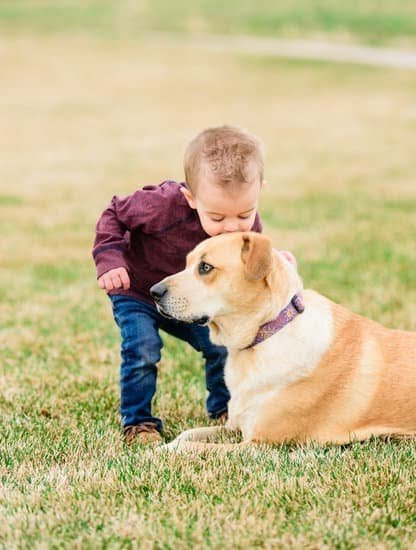How To Train A Dog To Sleep In Crate
Training a dog to sleep in a crate can be a challenge, but it is definitely worth the effort. Dogs that are crate trained are generally happier and better behaved. The key to success is to be consistent and patient.
The first step is to get your dog used to the idea of being in a crate. Start by putting the crate in a comfortable, quiet place in your home and leave the door open. Put some treats or toys in the crate and let your dog explore. Once your dog is comfortable going in and out of the crate, you can start to close the door for short periods of time. gradually increase the amount of time the door is closed.
The next step is to train your dog to sleep in the crate. Start by putting your dog in the crate at night and closing the door. Leave a treat or toy in the crate to encourage your dog to stay in it. Gradually increase the amount of time your dog spends in the crate each night.
It is important to be patient and consistent when training a dog to sleep in a crate. It may take a few weeks for your dog to get used to the idea, but the benefits are well worth the effort.
Crate Trained Dogs
Dogs that are crate trained are more likely to respond better to house training and are less likely to develop bad habits such as chewing on furniture. Crate training can be a helpful tool for both puppies and adult dogs.
The key to successful crate training is to make the crate a positive place for the dog. The crate should never be used as a punishment. Dogs should be given plenty of positive reinforcement when they are in the crate.
The crate should be large enough for the dog to stand up, turn around, and lie down in. It is important to never put the dog in the crate for extended periods of time. The dog should always have access to water and should be taken outside regularly.
Puppies can be crate trained by placing them in the crate for short periods of time and gradually increasing the length of time they stay in the crate. Adult dogs can be crate trained by gradually increasing the amount of time they spend in the crate.
Crate training can be a helpful tool for housetraining puppies and adult dogs. The key to successful crate training is to make the crate a positive place for the dog and to never use the crate as a punishment. Dogs should be given plenty of positive reinforcement when they are in the crate.
Crate Training Older Dog
There are a lot of reasons to crate train your older dog. Maybe you’re getting a new puppy and want to make sure your older dog is safe and comfortable in his own home. Maybe your older dog is having trouble house training or has started to chew on your furniture. Crate training can help with all of these things and more.
The basic idea behind crate training is that dogs naturally don’t like to soil their sleeping area, so if they’re crated they’re much more likely to hold it until they can go outside. It’s also a great way to keep your dog safe when you can’t keep an eye on him, like when you’re at work or asleep.
There are a few things to keep in mind when crate training an older dog. First, make sure the crate is big enough for your dog to stand up, turn around, and lie down in comfortably. You don’t want your dog to feel cramped or uncomfortable. Second, always make sure your dog has plenty of water and something to chew on in the crate. And finally, don’t leave your dog in the crate for too long. A good rule of thumb is to never leave your dog in the crate for more than 4 hours at a time.
If you’re crate training an older dog, be sure to start slowly. Introduce the crate to your dog gradually, and always make sure he’s comfortable and happy in it before leaving him alone. With a little patience and some basic training, you can have your older dog happily crated in no time.
How To Train Your Dog To Stay In The Crate
Many people view the crate as a necessary evil when it comes to dog training. They see it as a place where their dog is sent to when they can’t be supervised, and it’s often considered a punishment. However, when used correctly, the crate can be a valuable tool in your dog training arsenal.
The key to getting your dog to love his crate is to make it a positive experience. Start by putting a soft blanket or towel in the crate and putting a few of your dog’s favorite toys in there as well. When your dog is comfortable going into the crate, start feeding him his meals inside the crate. Once he is eating his meals in the crate, close the door for a few minutes. Gradually increase the amount of time your dog spends in the crate, but make sure he is always comfortable and has access to water.
The crate can also be a great place for your dog to take a nap or relax when he’s not feeling well. If you use the crate correctly, your dog will come to see it as a safe and comfortable place to be.
Blue Beagle Dog Training Crate
A dog crate can be a very effective tool in house training your dog. It can be used to confine your dog in a small area when you are not able to watch him, to help teach him not to soil his area, and to give him a place to go to when he needs a timeout.
When using a crate for house training, it is important to put your dog in the crate for short periods of time and to always give him plenty of opportunities to go outside to relieve himself. You should also make sure that the crate is big enough for your dog to stand up, turn around, and lie down in comfortably.
If you are using a crate to teach your dog not to soil his area, you should put him in the crate whenever you are not able to watch him. When he soils his crate, you should scold him and then take him outside to relieve himself. After he has relieved himself, give him a treat and lots of positive reinforcement.
“

Welcome to the blog! I am a professional dog trainer and have been working with dogs for many years. In this blog, I will be discussing various topics related to dog training, including tips, tricks, and advice. I hope you find this information helpful and informative. Thanks for reading!





